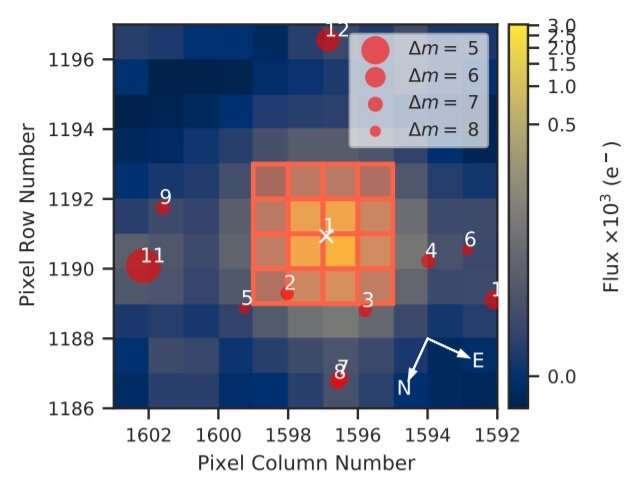February 10, 2022 report
Hot Earth-sized exoplanet detected with TESS

Using NASA's Transiting Exoplanet Survey Satellite (TESS), an international team of astronomers has discovered a new Earth-sized planet orbiting a nearby star. The newly found alien world, designated GJ 3929 b, is slightly larger and more massive than the Earth, however much hotter than our home planet. The finding was presented in a paper published February 2 on the arXiv pre-print server.
TESS is conducting a survey of about 200,000 of the brightest stars near the sun with the aim of searching for transiting exoplanets. So far, it has identified over 5,200 candidate exoplanets (TESS Objects of Interest, or TOI), of which 180 have been confirmed so far.
A team of astronomers led by Jonas Kemmer of the Heidelberg University in Germany has recently confirmed another TOI monitored by TESS. They report that a transit signal has been identified in the light curve of an M dwarf star known as GJ 3929 (other designations: G 180–18, TOI-2013). The planetary nature of this signal was confirmed by follow-up observations, using mainly the CARMENES spectrograph.
"In this study, we present the discovery of a hot Earth-sized planet orbiting the M3.5 V-dwarf star, GJ 3929. Based on transit signals observed by TESS, we performed an intensive RV follow-up campaign with CARMENES to confirm its planetary origin," the researchers wrote in the paper.
GJ 3929 b has a radius of about 1.15 Earth radii and its mass is approximately 1.21 Earth masses, thus the planet's density is calculated to be 4.4 g/cm3. The exoworld orbits its parent star every 2.61 days, at a distance of about 0.0026 AU from it. The equilibrium temperature of this planet is estimated to be 569 K.
The astronomers noted that the high equilibrium temperature of GJ 3929 b makes it a prime target for atmospheric follow-up observations. Such studies, using instruments like the James Webb Space Telescope (JWST) could deliver important information regarding the composition and, thus, formation and evolution of small and rocky planets.
The host star GJ 3929 has a spectral type M3.5 V and is about three times smaller and less massive than our sun. It has a rotation period of about 122 days, luminosity at a level of approximately 0.011 solar luminosities, and its effective temperature was measured to be around 3,369 K. The star is located some 51.6 light years away from the Earth.
The researchers assume that at least one more planet may be orbiting GJ 3929 (most likely every 14.3 days), however further studies of this system are required in order to confirm this.
"Moreover, the RV [radial velocity] measurements showed evidence for a second sub-Neptunian-mass planet candidate, namely GJ 3929 [c]. Its period is far from the rotation period of the star that we determined from archival photometry, and, therefore, it is not likely linked to stellar activity," the authors of the paper assume.
More information: J. Kemmer et al, Discovery and mass measurement of the hot, transiting, Earth-sized planet GJ 3929 b, arXiv:2202.00970v1 [astro-ph.EP] arxiv.org/abs/2202.00970
© 2022 Science X Network





















